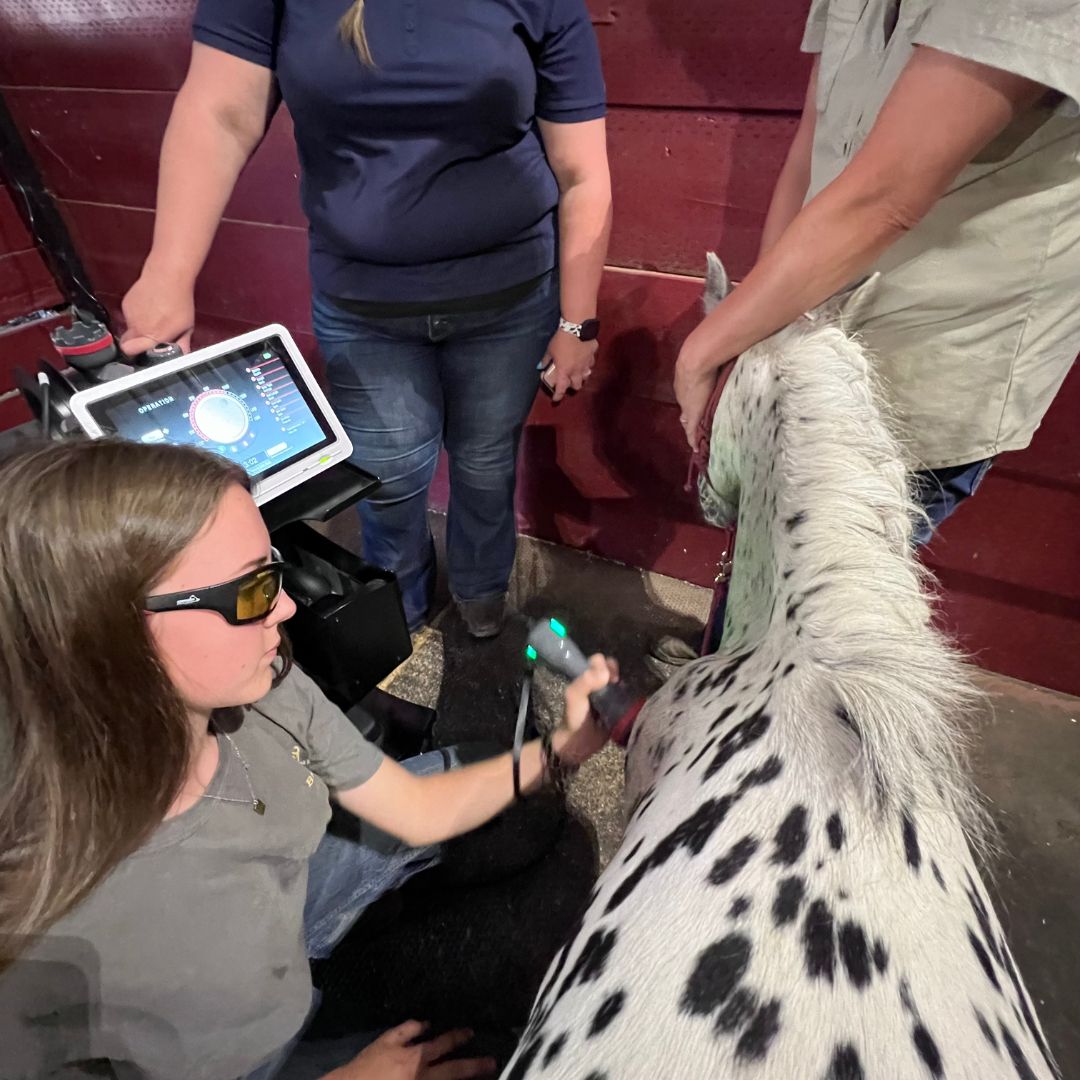Equine Cold Laser Therapy
Lasers stimulate a photo-bio-chemical cascade of events at the cellular level which relieves pain, reduces inflammation, and increases microcirculation.
About Equine Laser Therapy
Laser therapy is playing a growing role in equine veterinary practice as a way to heal athletic injuries on a cellular level. Utilizing a concentrated, non-cutting beam of light, this therapy provides accelerated healing and restoration of function within the tissue.
Equine laser therapy can address a variety of problems, including muscle soreness and fatigue, navicular disease, bone spurs, ligament injuries, and more. Because it hastens healing, patients can often return to competition within a few weeks rather than a few months.
What does a deep-penetrating therapeutic laser accomplish?
Through a stimulated photobiochemical cascade of events at the cellular level, we achieve relief of pain, a reduction in inflammation, and an increase in microcirculation. These result in an accelerated restoration of function or healing within the tissues.
A localized and systemic analgesic effect is accomplished through simultaneous biochemical pathways.
These are:
- Increased nitric oxide production
- Increase in the release of beta-endorphins
- Decreased bradykinin levels within the surrounding tissues
- Ion channel normalization within the individual cells
- Stabilization of the action potentials within the individual nerve cells
- An increase in the localized and systemic serotonin levels
- Increased release of acetylcholine
- Blocked depolarization of C-fiber afferent nerves
Inflammation is reduced by a similar cascade of events. These are:
- An inhibition in the synthesis and secretion of inflammatory prostaglandins yet a stimulation of those prostaglandins that have a vasodilatory and anti-inflammatory action
- Stabilization of the cellular membrane in regard to Ca++, Na+, and K+ concentrations
- Enhancement of ATP production and synthesis stimulating the metabolic activity and the production of fibroblasts
- Reduction in interleukin 1 production Microcirculation is primarily stimulated by the release of nitric oxide and increased levels of serotonin. This increase in circulation and subsequent vasodilatation allows for an increase in leukocytic and macrophage activities
What are the top clinical applications for deep-penetrating laser therapy?
There are four broad areas where photobiomodulation is of great benefit to the equine athlete:
- To accelerate the rehabilitation and healing of many common lameness disorders
- To maintain peak performance within any equine athletic discipline
- To prevent the occurrence or recurrence of athletic injuries
- As an essential component of stem cell and PRP treatment protocols
Combining deep-penetrating laser therapy with traditional therapeutic regimens accelerates the recovery time of many common lameness disorders in horses. Pharmacological approaches and rehabilitative physical therapy techniques, such as hyperbaric oxygen therapy and underwater treadmills, complement each other to reach the unique therapeutic goal for each patient.
Several of the most common applications of laser therapy for the treatment of lameness disorders include:
- Tendon and suspensory injuries such as tears, tendinitis, and desmitis
- Synovitis and tenosynovitis
- Osteoarthritis
- Back disorders
- Wound healing
One of the most important aspects of equine sports medicine is the maintenance of these athletes at their highest level of performance. Deep-tissue laser therapy is an invaluable tool for this endeavor. All athletes have to endure the rigors of training.
This training results in pain and soreness. Periodic therapeutic laser applications allow these equine athletes to recover faster and, therefore, train more efficiently. The ability to use laser therapy to prevent injuries is often overlooked or even considered non-efficacious. How important would it be to establish blood flow and elasticity within the tissues of the suspensory tendon in an equine athlete predisposed to stress in this area before a competitive event? Deep-penetrating laser therapy accomplishes this therapeutic goal.

